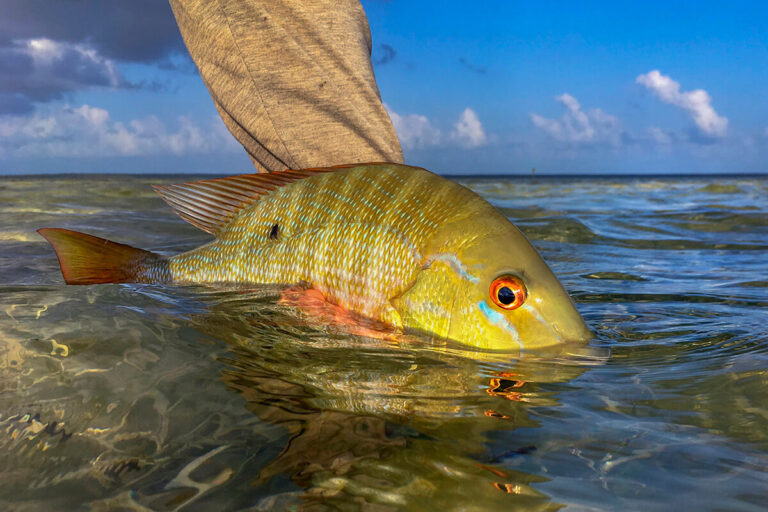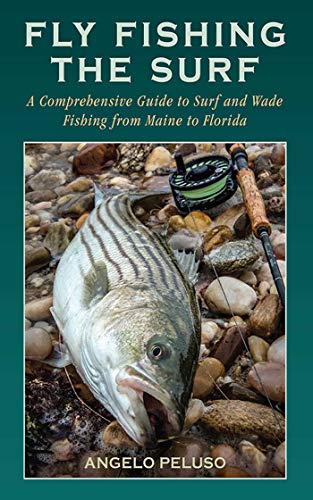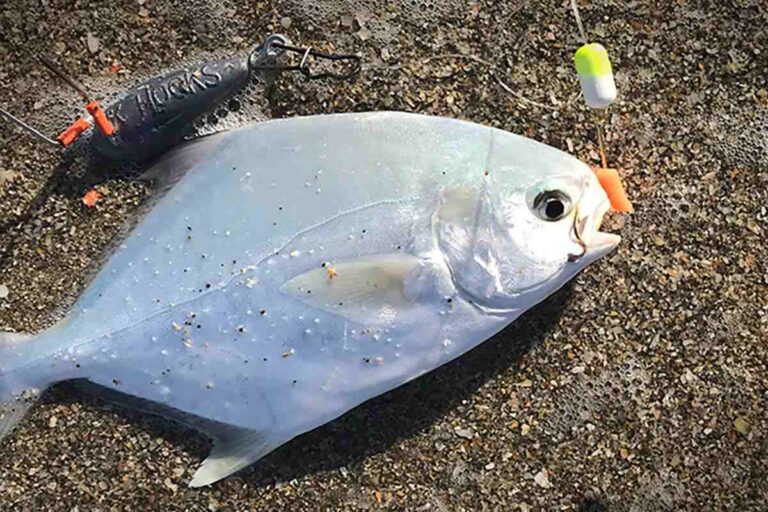The best time to surf fish is during the high tide in the early morning or late evening. Surf fishing enthusiasts have found that fishing during these times increases the chances of catching larger and more active fish.
As the tide rises, it brings in the bait fish closer to shore, attracting predator fish. The low light conditions during sunrise or sunset also provide an advantage as fish are more actively feeding during these times. Additionally, wind direction and speed, water temperature, and the lunar cycle can also affect a successful surf fishing trip.
By understanding the optimal time to surf fish, anglers can maximize their chances of a rewarding and productive fishing experience.

Credit: verobeachmagazine.com
Understanding The Factors That Affect Surf Fishing Success
The Impact Of Tide Patterns On Surf Fishing
Understanding the tidal patterns can greatly enhance your success in surf fishing. Here are some key points to consider:
- High tide vs. low tide: The movement of the tides significantly affects the behavior of fish. During high tide, fish tend to move closer to the shoreline, making it easier to target them. On the other hand, during low tide, you may need to cast your line further out to reach the fish.
- Incoming tide vs. Outgoing tide: Pay attention to whether the tide is incoming or outgoing. During an incoming tide, fish follow the water and move towards the shore, making it an ideal time to cast your line. Conversely, during an outgoing tide, fish tend to move away from the shore, so you may have better luck fishing further out.
- Slack tide: Slack tide refers to the short period when the tide changes from incoming to outgoing or vice versa. During slack tide, the water is relatively calm, and fish may become less active. It’s generally considered a less productive time for surf fishing.
How Weather Conditions Influence Surf Fishing
Weather conditions play a crucial role in determining the success of your surf fishing trip. Here are a few key points to consider:
- Wind: Wind direction and intensity can greatly impact surf fishing. A light onshore breeze can push baitfish and other food sources closer to the shore, attracting larger predator fish. However, if the wind is too strong, it can create choppy waters, making fishing more challenging.
- Temperature: Fish are sensitive to water temperature. They tend to be more active in warmer water, so targeting your fishing trips during the warmer months can improve your chances of catching fish. However, certain species thrive in colder waters, so the ideal temperature range may vary depending on the type of fish you are targeting.
- Precipitation: Rainfall can have both positive and negative effects on surf fishing. In light rain, the water becomes slightly murky, which can encourage fish to feed more actively. On the other hand, heavy rainfall can cause runoff, which may wash away baitfish and reduce the chances of a successful catch.
The Role Of Time Of Day In Surf Fishing Success
Choosing the right time of day can greatly impact your surf fishing success. Consider the following key points:
- Early morning and late evening: Many anglers swear by fishing during the early morning or late evening hours. During these times, the water is often calm, and the fish tend to be more active, especially during dawn and dusk. Additionally, there is typically less human activity along the shore, reducing potential disturbances.
- Midday: While midday may not be the prime time for surf fishing, it can still yield results, particularly on cloudy or overcast days. The reduced sunlight can create favorable conditions for certain fish species to venture closer to the shore in search of food.
- Nighttime: Nighttime fishing can be highly productive, especially for certain species like striped bass. Many fish are more active at night, and the cover of darkness allows them to approach the shallows more confidently. Using lighted bobbers or glow-in-the-dark lures can help attract fish during these hours.
By understanding the factors that affect surf fishing success, such as tide patterns, weather conditions, and time of day, you can strategically plan your fishing trips and increase your chances of reeling in a rewarding catch. Remember to check local fishing reports and consult with experienced anglers to further optimize your fishing adventures.
Ideal Seasons For Surf Fishing
Exploring The Best Times To Surf Fish During Spring
Spring not only brings a refreshing change in weather but also offers some fantastic opportunities for surf fishing. Here are the key points to consider when planning your surf fishing adventure during spring:
- Warmer waters: As the temperatures rise, the ocean waters gradually become warmer, attracting a wider variety of fish species closer to the shore.
- Migratory season: Spring is the time when many fish begin their annual migration patterns. This movement creates exciting opportunities to catch species like stripers, bluefish, and flounders as they travel along the coast.
- Spawning season: Various species of fish spawn during spring, making it an optimal time for surf fishing. Species like red drum and black drum gather in large numbers near the surf to reproduce, providing an excellent chance to catch these prized fish.
- Less crowded beaches: Unlike the peak summer months, spring offers the advantage of less crowded beaches. With fewer anglers vying for a spot, you can enjoy a more peaceful fishing experience while still reaping the benefits of the plentiful fish population.
The Perfect Moments For Surf Fishing In Summer
Summer is the pinnacle of outdoor activities, and surf fishing is no exception. Here are the key points to keep in mind when planning your summer surf fishing escapades:
- Abundance of fish: Summer brings an abundance of fish species to the coast, making it an opportune time for surf fishing. Species such as pompano, snook, and tarpon are in abundance, providing thrilling catches and memorable experiences.
- Longer days: With longer daylight hours, you have more time to enjoy your surf fishing adventures during summer. Catching the sunrise or sunset over the horizon while reeling in a prized catch is an unforgettable experience.
- Banish the summertime blues: Surf fishing is an excellent way to beat the heat and keep yourself engaged during the summer months. The cooling ocean breeze and the excitement of landing a big fish combine to create a refreshing and enjoyable experience.
Unveiling The Optimal Seasons For Surf Fishing In Fall
As summer transitions into fall, surf fishing reaches its peak potential. Here are the key points to consider when planning your surf fishing trips during autumn:
- Feeding frenzy: Fall is a time of abundance as baitfish start making their journey back south. This bait migration attracts predator fish, such as striped bass and bluefish, creating a feeding frenzy that surf anglers eagerly anticipate.
- Mild weather: The mild weather conditions in fall make it comfortable for anglers to spend extended periods on the beach. Enjoy the crisp air and picturesque surroundings while casting your line in pursuit of a prized catch.
- Scenic experiences: Fall offers visually stunning beach vistas, with vibrant foliage and stunning sunsets. Combine the beauty of the season with the thrill of surf fishing for an unforgettable outdoor experience.
Capitalizing On Winter For Successful Surf Fishing
While winter may seem like an unconventional time for surf fishing, it can be surprisingly rewarding. Here are the key points to consider when planning your winter surf fishing endeavors:
- Less competition: With fewer anglers on the beach during winter, you can have more privacy and ample fishing spots to choose from. Take advantage of this quieter period to enjoy a more serene fishing experience.
- Coldwater species: Winter is the prime time to target coldwater species such as striped bass and redfish. These fish thrive in the colder temperatures, making them more active and easier to catch.
- Larger catches: Winter offers the chance to reel in larger fish as they migrate closer to the shore seeking warmer waters. The thrill of battling with a massive winter catch adds an extra layer of excitement to your surf fishing experience.
Whether it’s spring, summer, fall, or winter, each season presents unique opportunities for surf fishing. Plan your trips accordingly to make the most of the optimal fishing conditions and maximize your chances of success. Remember to check local regulations and obtain any necessary permits before heading out on your surf fishing adventures.
Location Matters: Where And When To Surf Fish
Surf Fishing Along Coastal Areas: Rhythms And Opportunities
Surf fishing is an exciting and rewarding activity for fishing enthusiasts who love the thrill of casting their lines into the sea. However, if you want to increase your chances of success, it’s important to understand the rhythms and opportunities that different coastal areas present.
Here are some key points to keep in mind:
- Different coastal regions offer unique surf fishing experiences: Each coastal area has its own charm and offers specific opportunities for surf fishing. Whether you’re on the pacific coast, atlantic coast, gulf coast, or in other regions, familiarize yourself with the characteristics of each area to optimize your fishing experience.
- Timing is crucial: Timing plays a significant role in surf fishing success. Pay attention to the tides, moon phases, and weather conditions as they greatly impact fish feeding patterns. By understanding the ebb and flow of the ocean, you can plan your fishing trips to coincide with the best times for catching fish.
- Research the local fish species: Before heading out to surf fish in a specific coastal area, research the local fish species that are prevalent during different times of the year. This knowledge will help you determine when and where to fish for your desired catch.
- Get to know the underwater topography: Understanding the underwater topography is essential for surf fishing. Many coastal areas have sandbars, troughs, and channels that attract fish. By identifying these features, you can position yourself strategically to increase your chances of hooking a fish.
- Local knowledge is invaluable: When it comes to surf fishing, local knowledge is invaluable. Chat with local anglers, visit bait shops, and explore online forums to gather insider tips on the best locations and times to fish. Locals have years of experience and can provide valuable insights that can make a significant difference in your fishing endeavors.
Pacific Coast Specials: Best Times For Surf Fishing
The majestic pacific coast of the united states boasts an abundance of fish species and offers exceptional opportunities for surf fishing. Here are the best times for surf fishing along the pacific coast:
- Spring: Spring is an excellent season for surf fishing on the pacific coast. As the water starts to warm up, a variety of species, including striped bass, halibut, and perch, become more active and move closer to the shore.
- Summer: Summer is the peak season for surf fishing along the pacific coast. Warm water temperatures attract a wide range of fish, such as barracuda, corbina, and yellowfin croaker. Mornings and evenings are particularly fruitful during this time.
- Fall: Fall marks the transition period when many fish species, including salmon, make their way up the coast. This season offers exciting opportunities for anglers to target these species from the surf.
- Winter: While winter brings colder water temperatures, there are still ample chances to catch fish along the pacific coast during this season. Species like perch, barred surfperch, and cabezon are active and can be successfully targeted.
Atlantic Coast Gems: Optimal Seasons And Locations For Surf Fishing
The atlantic coast of the united states is renowned for its diverse marine life and stunning surf fishing opportunities. Here are the optimal seasons and locations for surf fishing along the atlantic coast:
- Spring: Spring is a prime season for surf fishing in the atlantic. As water temperatures rise, species like striped bass, bluefish, and flounder become more active. Head to areas with jetties, piers, and estuaries for the best chances of success.
- Summer: Summer offers fantastic surf fishing along the atlantic coast. Species such as bluefish, weakfish, and kingfish are abundant during this season. Focus on fishing near sandbars and troughs where fish tend to congregate.
- Fall: Fall is a bountiful season for surf fishing on the atlantic coast. Striped bass, bluefish, and red drum are commonly caught during this time. Look for rocky areas, as fish are attracted to the structure provided.
- Winter: Despite the colder temperatures, winter can still be fruitful for surf fishing along the atlantic coast. Striped bass and winter flounder are popular catches during this season. Target areas with deeper troughs for the best results.
Gulf Coast Marvels: Prime Moments For Surf Fishing
The gulf coast is a true paradise for surf fishing enthusiasts, offering a diverse range of fish species and stunning coastlines. Here are the prime moments for surf fishing along the gulf coast:
- Spring: Spring is an exciting time for surf fishing on the gulf coast. Species like speckled trout, redfish, and spanish mackerel are highly active during this season. Focus on fishing near inshore grass beds and jetties for optimal results.
- Summer: Summer is an action-packed season for gulf coast surf fishing. Fish such as pompano, sheepshead, and flounder are prevalent. Look for areas with submerged structures, such as shipwrecks or rock formations, as they attract fish.
- Fall: Fall brings cooler temperatures, making it an ideal time for surf fishing along the gulf coast. Bull redfish, black drum, and flounder are commonly targeted during this season. Pay attention to changes in water temperature as it affects fish behavior.
- Winter: While winter brings cooler water temperatures, there are still opportunities to catch fish along the gulf coast. Speckled trout, redfish, and sheepshead can still be caught, particularly in deeper channels and around piers.
Surf Fishing In Other Regions: Insider Tips On Timing And Locations
Surf fishing isn’t limited to just the pacific, atlantic, and gulf coasts. Other coastal regions also offer fantastic opportunities for anglers. Here are some insider tips on timing and locations for surf fishing in these regions:
- Great lakes: The great lakes offer excellent surf fishing opportunities, particularly during the spring and fall seasons. Focus on sandy beaches near river mouths and structures like jetties.
- Caribbean: The caribbean is a tropical haven for fishing enthusiasts. Most species can be targeted year-round, but the winter months are particularly rewarding for species like bonefish, permit, and tarpon.
- New england: New england’s rocky coastline provides a unique surf fishing experience. Striped bass, bluefish, and flounder are prevalent during the summer months, especially near estuaries and inlets.
- West coast of mexico: The west coast of mexico offers exceptional surf fishing throughout the year. Species like roosterfish, sierra mackerel, and snappers can be targeted depending on the season.
- Australia: With its vast coastline, australia offers diverse surf fishing opportunities. Timing varies by region, but species like tailor, bream, and whiting can be targeted during different seasons.
Remember, researching local regulations, obtaining the appropriate licenses, and respecting the environment are essential components of being a responsible surf angler. So grab your fishing gear, study the tides, and head to the coast for an unforgettable surf fishing adventure! Happy fishing!
Conclusion
Overall, choosing the best time to surf fish can greatly enhance your chances of a successful fishing trip. By understanding the various factors that affect fish behavior, such as tides, weather conditions, and time of day, you can determine the optimal time to cast your line.
Whether you prefer early morning or late evening fishing, it’s important to arrive at your fishing spot well-prepared and knowledgeable about the local conditions. Planning ahead and staying informed about the seasonal migration patterns and feeding habits of the fish in your area can also contribute to a more rewarding fishing experience.
Remember to always check local regulations and licenses before heading out, and stay respectful of the environment and fellow anglers. So, grab your gear, consult a fishing calendar, and embark on your next surf fishing adventure with confidence, hopefully reeling in some memorable catches along the way!






